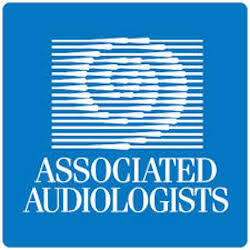- Landline
- (785) 539-7361
- appointments@hearingyourbest.com
- @HearingYourBest
- HearingYourBest
- Video
- www.youtube.com
- Website
- www.hearingyourbest.com
Description
Associated Audiologists provides treatment for hearing loss, tinnitus, dizziness and imbalance. We offer cutting edge hearing aid technology, hearing aids, and hearing aid repair. Contact us at our location in Manhattan, KS below. Manhattan Medical Center 1133 College Ave. Building A, Suite 101A Manhattan, KS 66502 Phone: (785) 539-7361 Fax: (785) 539-8529 Hours: Mon to Fri, 8:00 am to 5:00 pm For urgent problems, contact the clinic where we normally see you to check the availability of our audiologists. Providers at this location David Paul, Au.D., Audiologist and Leavenworth Clinic Manager Katelyn Waldeier, Au.D., Audiologist Jonathan York, Au.D., Audiologist Directions From I-70: Take the Highway 18/Fort Riley Blvd. exit and go north into Manhattan. It turns into Tuttle Creek Blvd. Turn left on Bluemont, which turns into Anderson. Turn Right on Midland, left on College Heights Road, then right on College Ave. You will see the Manhattan Medical Center Building A on your left. Go in the lower level, Suite #101. From the East (Wamego): Take Hwy 24 West. Turn Right on McCall Road, then right on Tuttle Creek Blvd. and go about one mile. Turn left on Kimball and go about one mile. Go left on College. You will see the stadium on your left and Mercy Hospital on your right. After you pass Claflin Road, you will see the Manhattan Medical Center Building A immediately on your right. Go in the lower level, Suite #101. From the North (Clay Center): Take Hwy 24 South, which becomes Tuttle Creek Blvd. Turn Right on Kimball and go about one mile. Go left on College. You will see the stadium on your left and Mercy Hospital on your right. After you pass Claflin Road, you will see the Manhattan Medical Center Building A immediately on your right. Go in the lower level, Suite #101.
Keywords Audiologists, Hearing Aids, Tinnitus, Hearing Loss.
Reviews
Opening hours
Payment Options
American Express , Visa , Cash , Check , Discover , MasterCard
Products And Services
-
Receiver-in-Canal Aids
These aids look similar to the behind-the-ear hearing aid with a unique difference — the speaker of the hearing aid is placed inside the ear canal, and a thin electrical wire replaces the acoustic tube of the BTE aid. These aids also offer cosmetic and listening advantages for many adults. These can be utilized as open fit technology.
Link: Receiver-in-Canal Aids
-
In-the-Ear (ITE) Aids
All parts of the ITE aid are contained in a custom shell that fits in the outer part of the ear canal. These aids are larger than canal aids and, for some people, may be easier to handle than smaller hearing aids.
Link: In-the-Ear (ITE) Aids
-
Invisible-in-Canal (ILC), In-the-Canal (ITC) and Completely-in-the-Canal (CIC) Aids
These aids are contained in a tiny case that is custom fit partly or completely into the ear canal. They are the smallest aids available and offer some cosmetic and listening advantages. Our audiologists can determine if you are a good candidate for invisible-in-canal, in-the-canal, or completely-in-the-canal technology.
Link: Invisible-in-Canal (ILC), In-the-Canal (ITC) and Completely-in-the-Canal (CIC) Aids
-
Behind-the-Ear Open-Fit
Open-fit technology keeps the ears open to sound, rather than plugging up the ear with the hearing aid. The pitches that you don’t need amplified travel normally through the ear canal, remaining natural and comfortable, while the pitches at which you have hearing loss are amplified. With an open fitting, sounds at the eardrum arrive directly from both the open ear and the hearing instrument.
Link: Behind-the-Ear Open-Fit
-
Extended-Wear Hearing Aids
These hearing aids fit deep in the ear canal, and are designed to be worn continuously, 24 hours a day, seven days a week, for several months at a time. You can wear the device during daily activities, like exercising, showering, talking on the phone, and sleeping. These hearing aids are purchased on a yearly subscription basis. The audiologist replaces the device(s) in the clinic approximately every 120 days. This removes the need to change batteries and perform daily maintenance. The ideal extended-wear candidate is an individual with mild to moderate hearing loss who enjoys an active lifestyle. Our audiologists can determine whether you are a good candidate for extended-wear hearing aids.
-
Behind-the-Ear (BTE) Aids
All parts of the BTE aid are contained in a small plastic case that rests behind the ear. The case is connected to an earmold by a piece of clear tubing.
Categories
Ear Care(785)539-7361 (785)-539-7361 +17855397361
Map 1133 College Ave.
Loading map...
